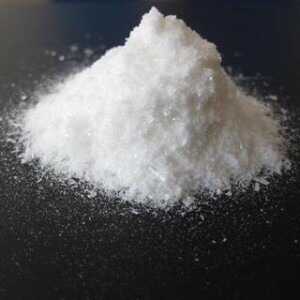
O sal de cura 1 contém apenas o nitrito de sódio e é o nitrito de sódio que atua durante a cura na proteína da carne. O sal de cura 2 contém, além do nitrito de sódio, o nitrato de sódio. O nitrato de sódio é convertido lentamente em nitrito de sódio durante o processo. Ou seja, o nitrato de sódio só atua após ser convertido em nitrito de sódio! A questão do sal de cura 2 é exatamente essa, prolongar a atuação da cura durante esse tempo lento em que é convertido em nitrito de sódio. Usando o sal de cura 1 terá uma cura rápida que esgotará o nitrito presente rapidamente, por isso é usado o nitrato de sódio(do sal de cura 2), para que a cura seja prolongada em produtos que levam tempo para ficarem prontos, como, por exemplo, salame e copa.
Poder pode, obterá o resultado da cura como a coloração e o sabor de curado, mas o processo será rápido e consequentemente a proteção também será mais curta. O ideal é usar o sal de cura tipo 2, pois o produto terá exposição prolongada ao nitrito de sódio.
Leia mais no post:




Posso fazer a fermentação do salame em geladeira ,apenas com controle de temperatura? No momento não tenho controlador de umidade
Alessandro, a fermentação do salame é feita fora da geladeira, em temperatura ambiente. Após a fermenta é iniciado o processo de perda de peso e maturação, que ocorra em ambiente mais frio, como na geladeira. Mas a umidade precisa ser elevada para não ocorrer o ressecamento do exterior do salame. Pode fazer um uma caixa plástica como nesta receita de salame na geladeira: Salame artesanal feito na geladeira
Qual a temperatira ideal para a Maturação da copa?
12ºC
Estou utilizando o sal de cura tipo 2 na carne bovina só que na hora que o coloco na carne ele a escurece na hora isto e normal?
Não deveria escurecer a carne. O que o sal de cura faz é fixar a coloração avermelhada, mas isso leva um tempo e fica mais evidenciado após a cocção. O escurecimento pode ser decorrente da dinâmica da mioglobina em contato com o oxigênio. Leia este post para avaliar se é este o caso: Entenda a cor da carne
Tem problema fazer a cura do bacon por 7 a 10 dias com sal de cura #2???
Oi Bruno, sem problemas, pode fazer com o sal de cura 2.
Bom dia! Para comercializar linguiça artesansl, além do sal de cura 1 é necessário utilizar acelerador de cura?
Outra pergunta, após finalização da linguiça, posso embalar a vácuo e congelar de imediato e o sal de cura será ativado da mesma forna, ou preciso deixar um período refrigerado embalado ou não para que o sal de cura entre em ação?
É possível usar Cura #2 em produtos frescais ??
Oi Luis, pode sim. Grandes frigoríficos geralmente usam o sal de cura 2 nas frescais pois as linguiças passam um bom tempo armazenadas até o consumo. O ideal é o sal de cura 1 mas pode usar o 2 também.
Boa tarde, acabei colocando o sal de cura 1 para fazer copa, vou ter algum problema maior fora o tempo de conservação menor do produto final?
Mateus, sem problemas. Só não terá a exposição mais longa ao aditivo proporcionada pelo nitrato de sódio. Mas não há qualquer outra interferência negativa.
Oq acontece se durante inicio da maturação do salame,ele congelar e depois descongelar?
Acredito que o único problema possa ser alguma alteração na textura final. Talvez fique menos compacto e mais quebradiço. Mas só vendo o resultado para ter certeza. Com relação ao restante não vejo problemas, pode continuar o processo.
Qual seria o tempo de fermentação e maturação,feito com sal de cura I?
Oi Raphael, depende muito do produto e da receita. A fermentação geralmente é feita em 72 horas com temperatura perto de 25ºC. A maturação varia muito de acordo com o produto, o ideal é controlar pela perda de peso. Salames e copas precisam perdem entre 35% e 45% do peso, o que pode variar entre 20 e 40 dias dependendo da taxa de perda e espessura do produto.
Mesmo sendo o sal de cura 1?